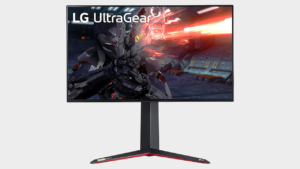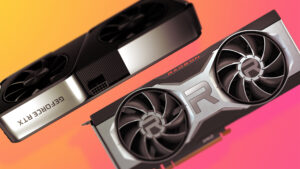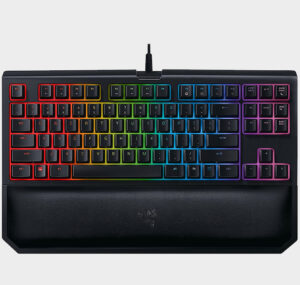The best light gaming mouse makes controlling your games and PC a breeze. Normal mice can weigh you down, but a light gaming mouse lets you have more direct input on your movements, which can lead to faster reactions in fast-paced games. Light gaming mice are what you look for when you want precision and speed, and almost no barrier between your hand and the game.
While we’ve come a long way since hefty rubber balls traversing magazine freebie mousepads, even the most popular tournament-grade gaming mouse has a bit of heft to it. Hence the term 'ultra-lightweight' gaining buzzword status, particularly as manufacturers attempt to sell the latest line of top-tier gaming mice.
Premium peripheral manufacturers are putting the time and resources into developing next-generation sensors and sleeker switches; they're even perforating the shells of input devices in an attempt to make gaming mice lighter. Theoretically, it should reduce fatigue, the risk of medical injuries, and syndromes like RSI or carpal tunnel, and otherwise increase the speed at which we can pull off clip-worthy headshots in shooters or highlight powerful units in hectic RTS battles.
Hyper-accurate sensors also play a big part these days. At higher refresh rates and resolutions, the need for next-generation sensors exists to ensure players aren't held back by the very thing designed to replicate their movements. None of the sensors used in the mice listed below will struggle to keep up or threaten to hold you back, but there are pros and cons to everyone.
We've tested every lightweight gaming mouse in this list to make sure they're up to our standard and fit for use. And believe me there were a fair few mice that didn't make the cut. If weight isn't the be-all and end-all for you, then also check out the best gaming mice overall.
Best light gaming mouse
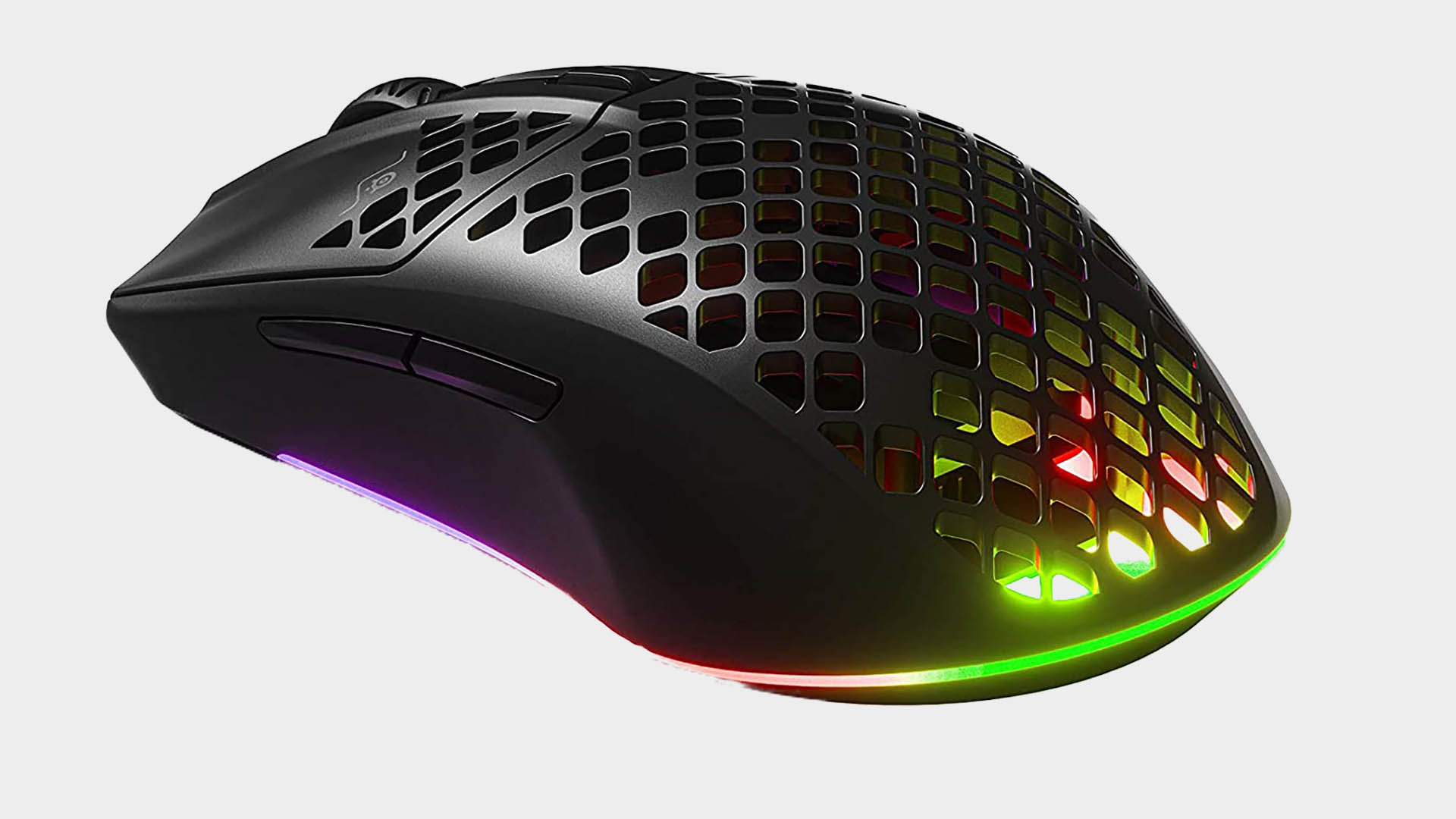
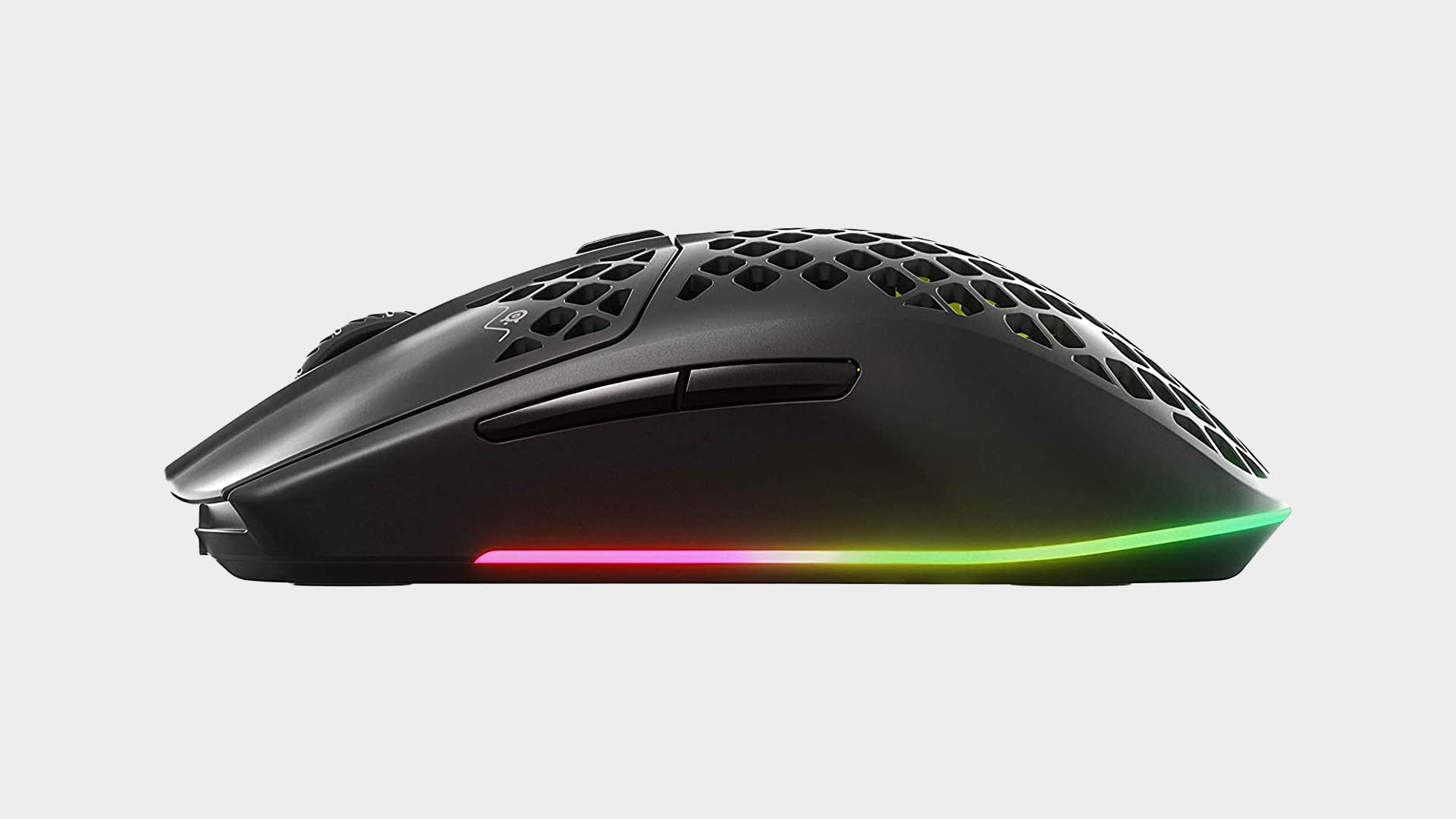

SteelSeries has hit a sweet spot with the Aerox 3 Wireless. The honeycomb perforations spread further than most, giving even the tops of your fingers a bit of a breeze, and it features a coarse outer shell for those who need the extra grip. The side buttons are held back by a narrow thumb rest, and the otherwise beautiful RGB trim reveals visible circuitry, which, depending on taste, can cheapen the overall look.
Small hands and a claw grip will go a long way here: Large-handed palm grip gamers might find themselves dragging their digits or risking accidental clicks. Even when opting for that slightly slimmer profile, though, the Aerox 3 Wireless managed to provide Bluetooth connectivity on top of its lightning-fast 2.4GHz mode.
Paired with a physical DPI button just above the mouse wheel, RGB lighting, a mammoth 200+ battery life (with fast charge and USB Type-C), and an included receiver hub and cable, there's a degree of flexibility here that other wireless options in its grade can't match—and its only 3 grams heavier than the other wireless mouse on this list.
Read our full Steelseries Aerox 3 Wireless review.
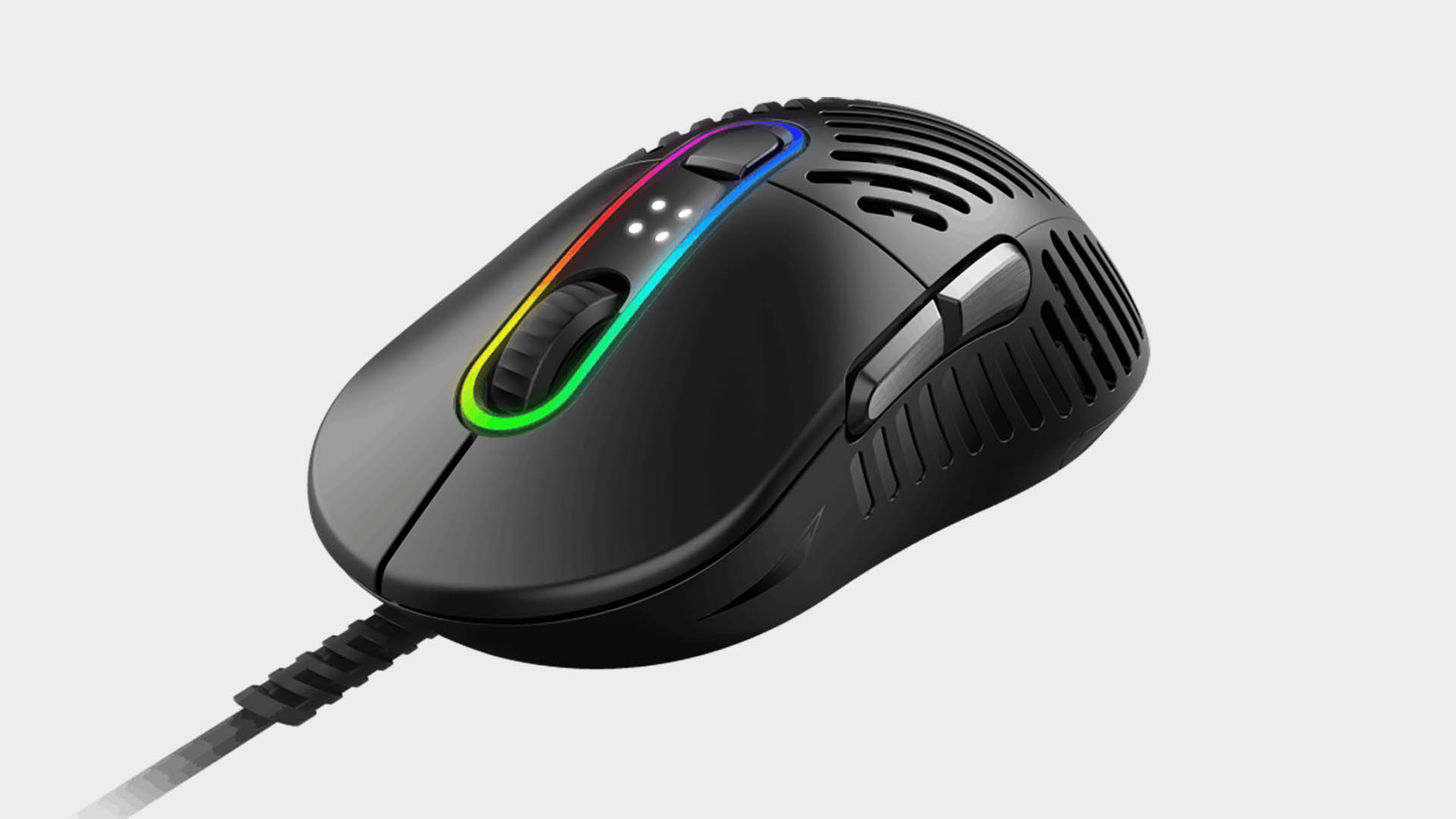
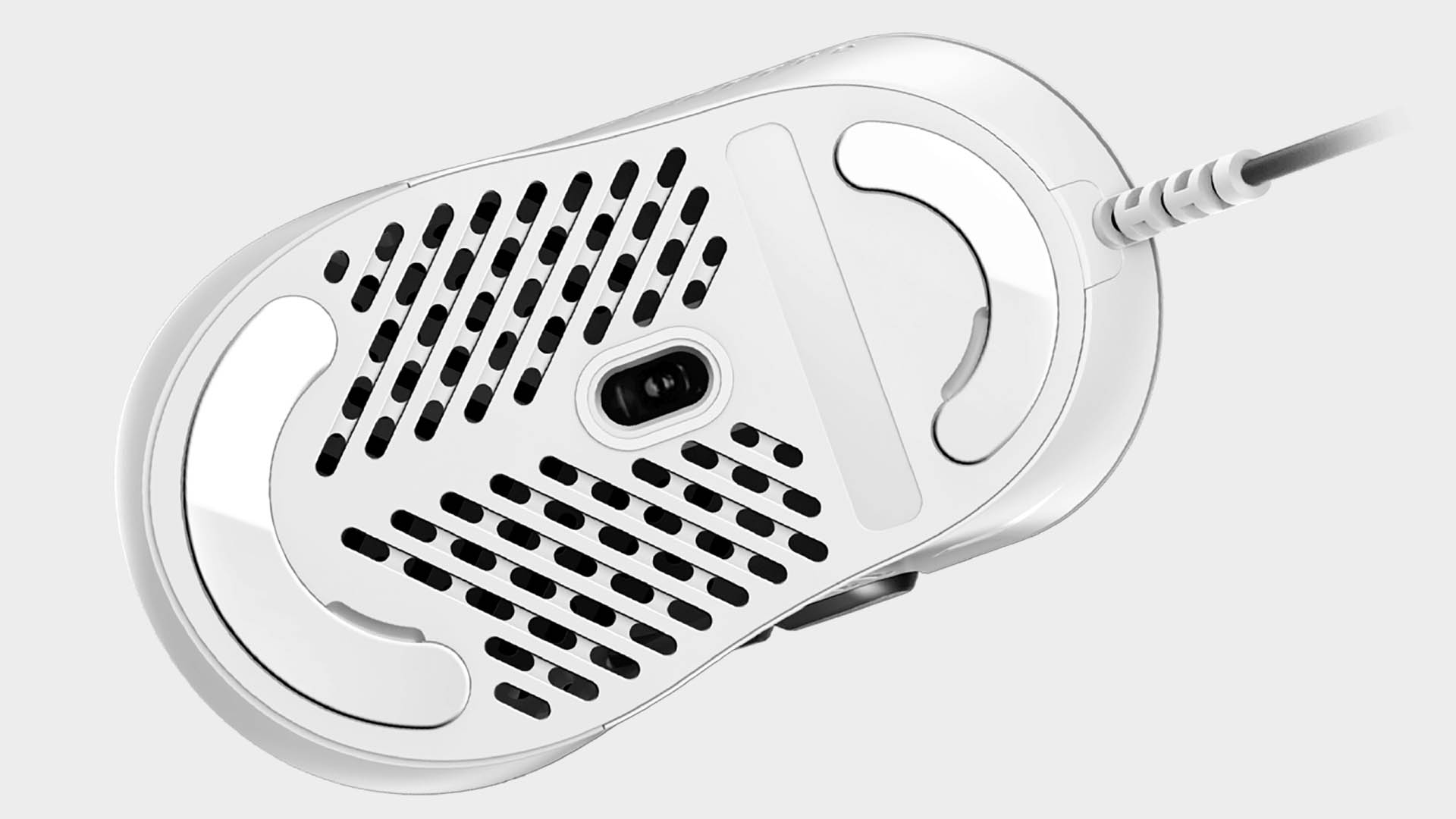

The Mountain Makalu 67 is a stylish piece of kit. It's also the chunkiest option on this list, making it a great choice for the bigger-handed player looking for a great light gaming mouse. Its large stature and heavily curved body should suit palm grips the best, but claw grip players shouldn’t notice any major downsides. Just note that it slopes aggressively on the right side.
There’s a deeply satisfying click from the two well-pronounced thumb buttons on the left. They sit relatively high up the body, giving your thumb plenty of space to work with, with molded ridges aiding further comfort. The cable is loose and light enough to whip around no problem, but the long rubber stem pinning it to the chassis might snag on a mousepad with any raised edge, like from a USB hub.
It would have been nice to see the breathable perforations stretch to the thumb and finger areas as well, but overall, the Mountain Makalu 67 is a solid choice and one that’s far lighter than it looks. It even features handy indentations to make replacing the mouse feet a breeze whenever the time comes.
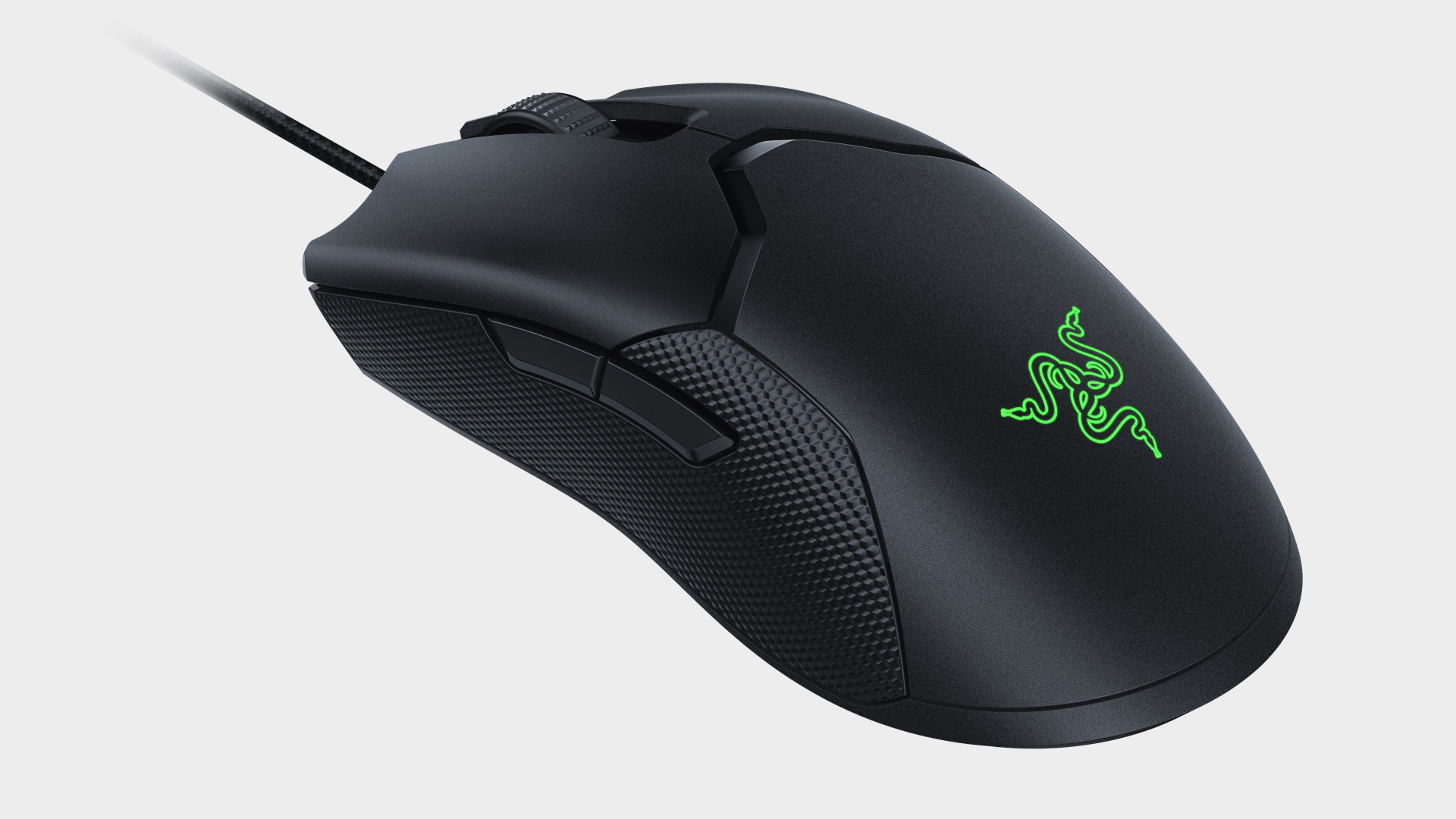
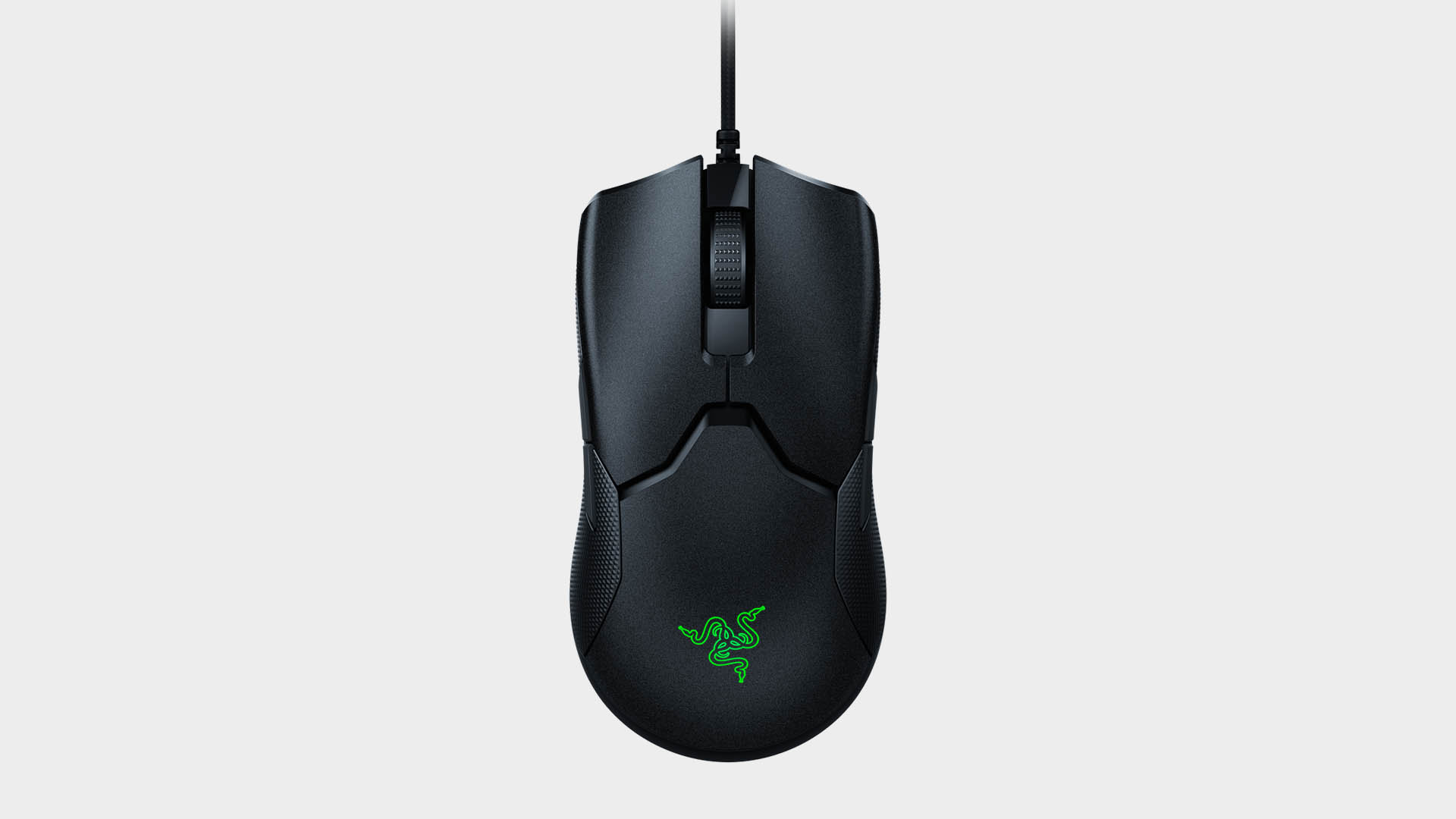
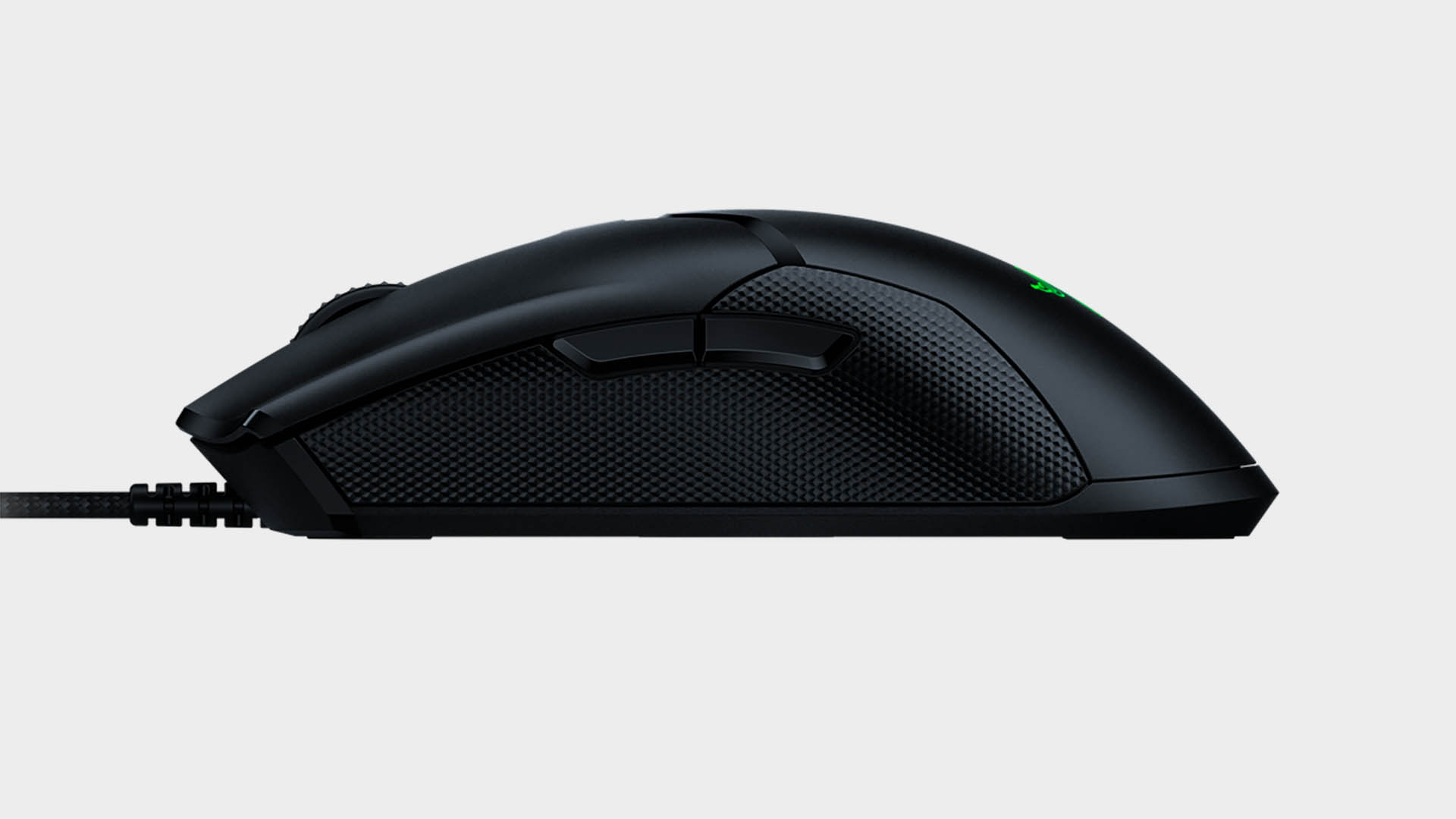
Razer slides into the emerging light gaming mouse market this year with the wired Razer Viper 8KHz. The name is just a fancy way of saying the mouse reports its position to your computer a whopping 8,000 times per second. Is it noticeable in-game? Not really. But it’s a reassuring claim to fame that should reduce figurative mouse latency to a frankly ludicrous low.
The frighteningly fast sensor is housed in a solid plastic chassis that’s segmented in a cyborg-esque fashion. And it looks smoother than it actually is. Lay your palm over the low-profile body, and you’ll have a slightly textured grip and curved mouse buttons to keep you in place. With five DPI profiles and 8K polling enabled out of the box, the only real reason to need Razer's own software clogging up your machine is to set a reachable DPI toggle, as it's inconveniently placed underneath.
As the only ambidextrous mouse on our list, rubber grips beneath the two buttons on either side will aid thumb grip, but the premium touch does open up the question of long-term durability. The whole package doesn’t feel quite as high quality as others, but its ambidextrous design makes it the most well-rounded.
Read our full Razer Viper 8KHz review.
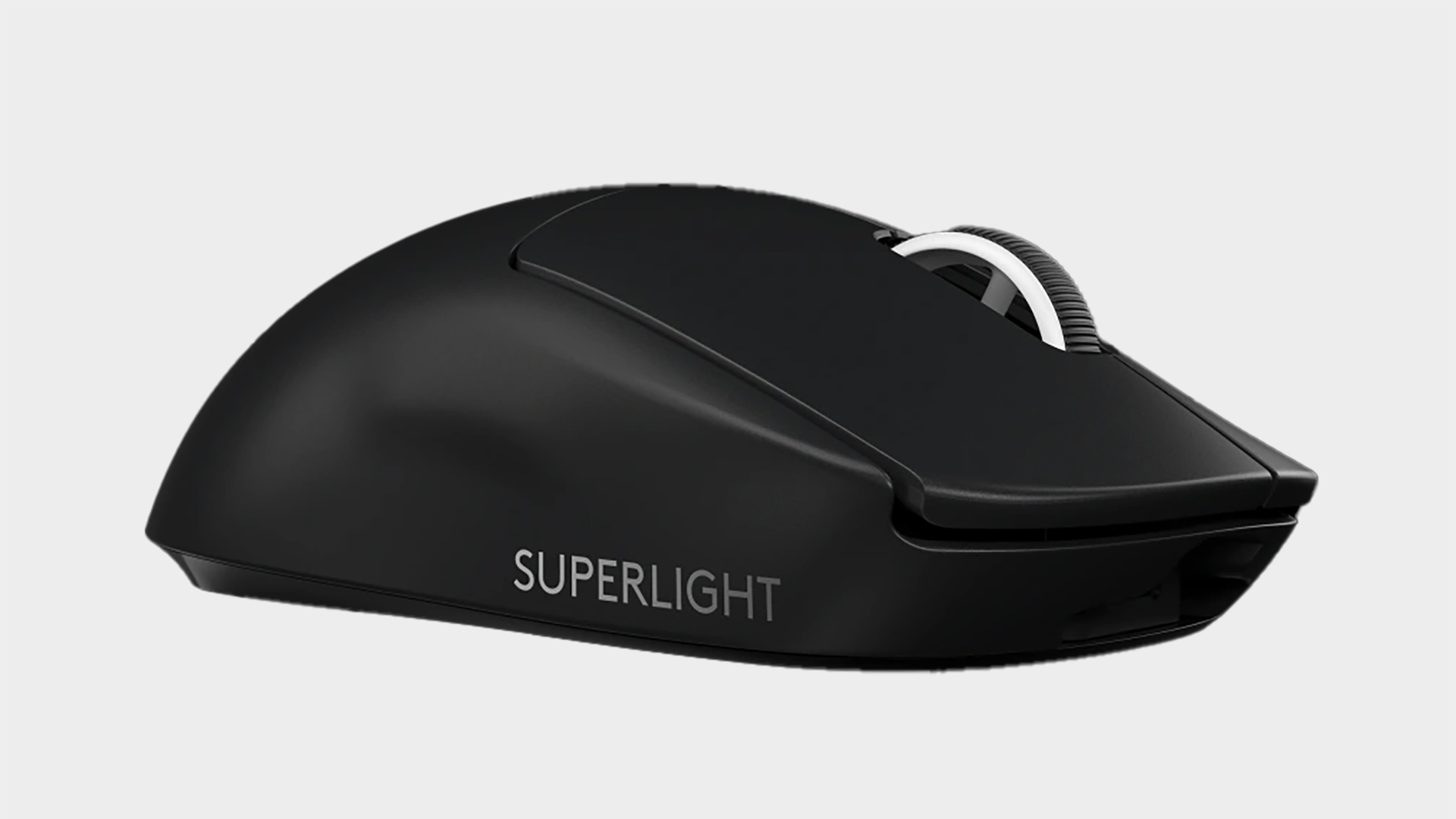
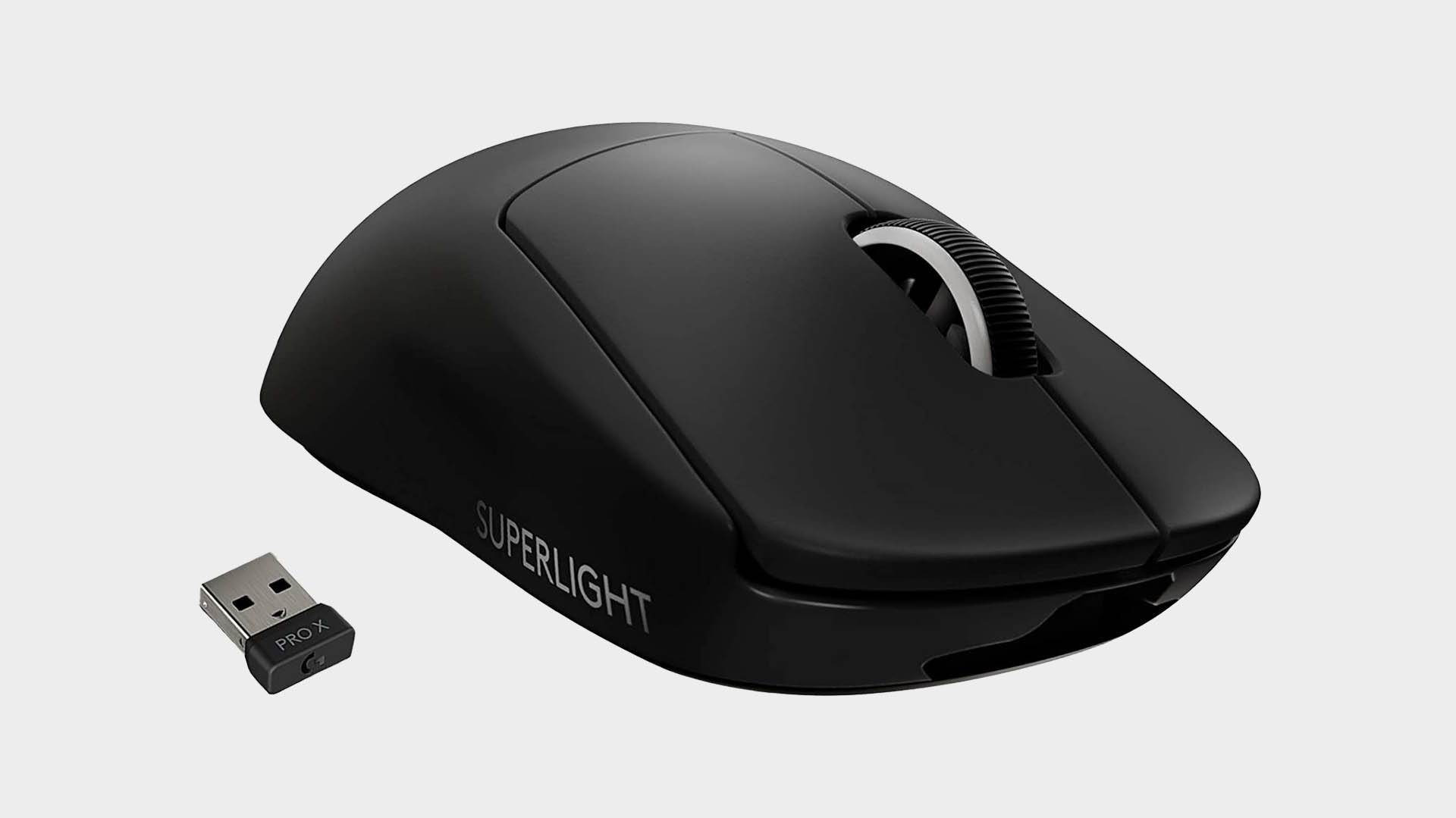
Logitech has a long and storied history in the PC peripheral space, so it should come as no surprise to see them enter the light gaming mouse market. By far, the best part of the Logitech G Pro X Superlight is its wireless functionality. Though cords barely add a gram to the equation, the drag and snag potential is there. Sure, the battery of this particular pointer could run dry at a moment's notice. Still, the Powerplay wireless charging functionality can keep it going indefinitely by going deeper into the Logitech ecosystem for some extra cash.
Outside of theoretical, the Logitech G Pro X Superlight is about as sleek as stylish as gaming mice come. Devoid of RGB, it wouldn't look out of place in the office meeting room. Its egg-like body is perhaps too smooth to the touch with no real grip to speak of, but at a mere 63g, it manages to weigh less than Razer's best attempt even while packing a 70+ hour battery.
The side buttons maybe a little too small and mushy for some. But had it not been for the Steelseries Aerox 3 Wireless, this would be the wireless light gaming mouse option to beat. It's just a shame Bluetooth support may have become a casualty of the war on weight, which leaves its connectivity options lacking compared to its wireless rivals.
Read our full Logitech G Pro X Superlight review.
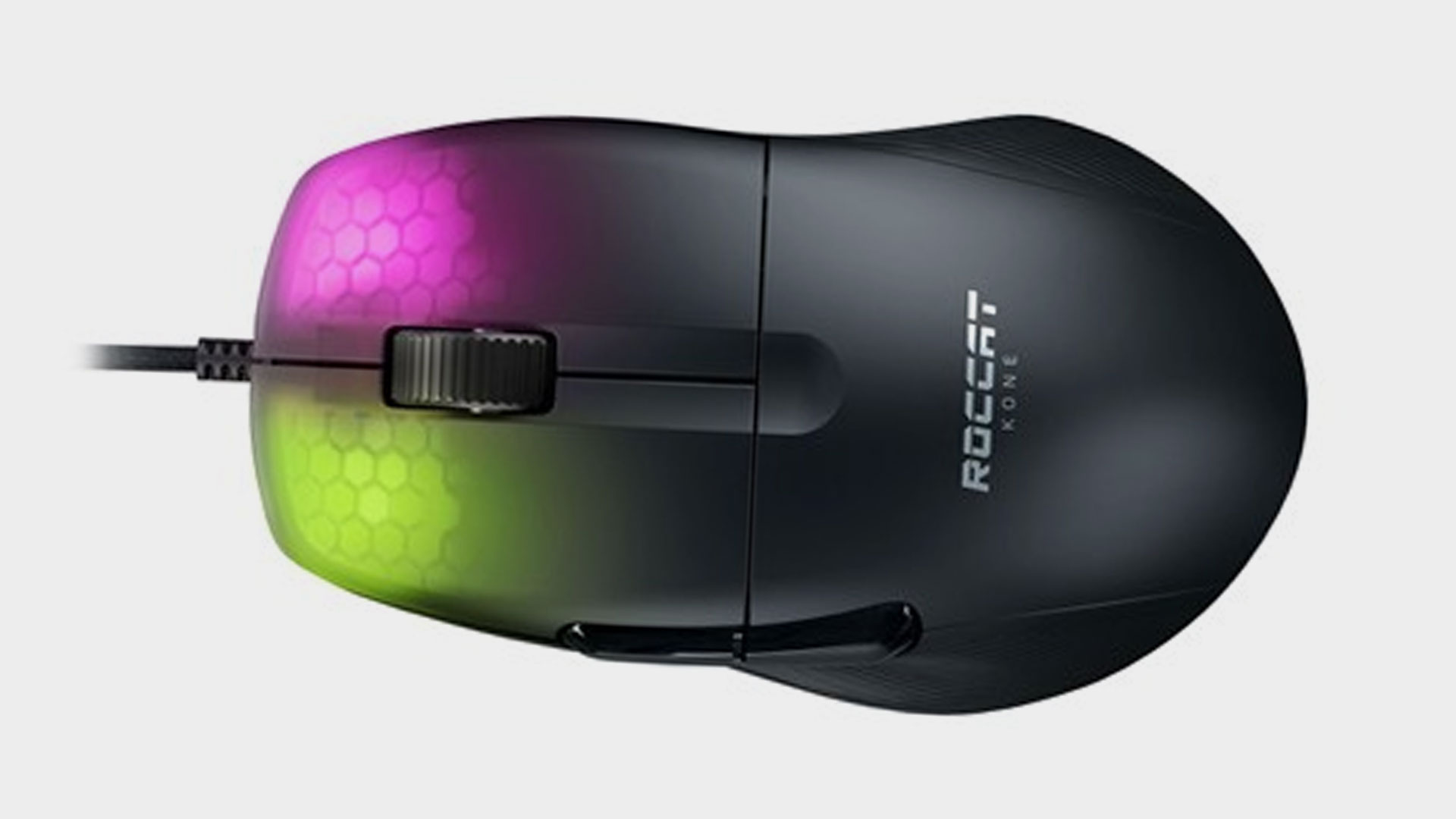

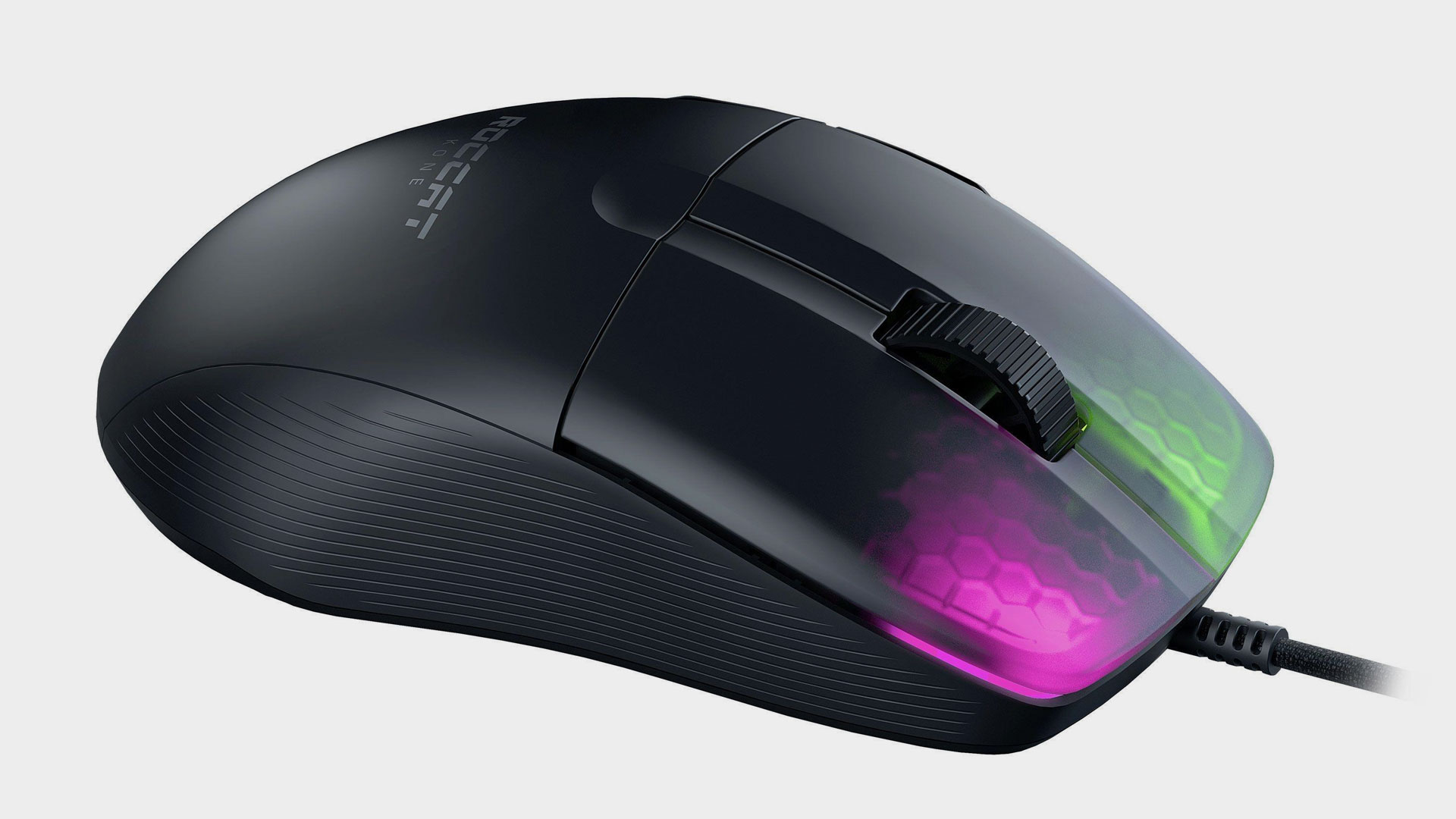
The Roccat Kone Pro is the wired and slightly lighter version of the Roccat Kone Pro Air and comes in at less than two-thirds of the price. Similar to its wireless counterpart, its design is an interesting take on the honeycomb look. Rather than plastering the chassis with holes, Roccat has quite classily nestled the honeycomb design under the thin plastic of the left and right mouse buttons. Not only does it help to reinforce them, but it looks rad illuminated from beneath—it makes you feel a bit like a Jedi.
And if being tethered to your PC makes you wince, it doesn't translate to awkward cable battles with the Kone Pro. The braided cable is barely noticeable when shifting around on these swift PTFE feet. The issue comes mainly in that the DPI button is, for some strange reason, on the underside of the mouse, so there can be no quick profile changes mid-battle.
And while it may not be the lightest mouse, nor has it got the highest DPI, it's a unique, ergonomic, and all-over quality build that's easily one of the most comfortable and gorgeous mice I've used—not to mention it being consistently accurate.
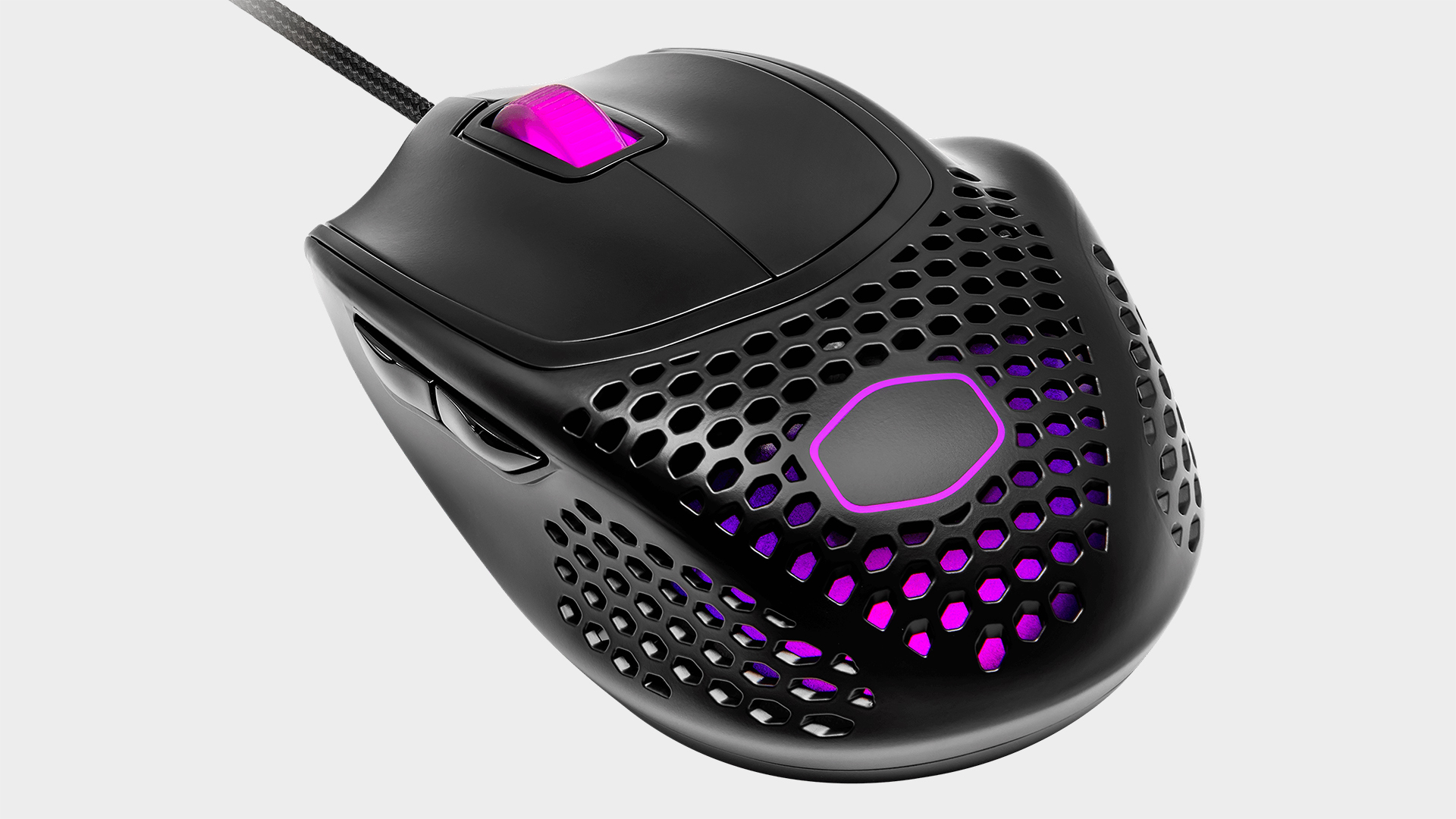
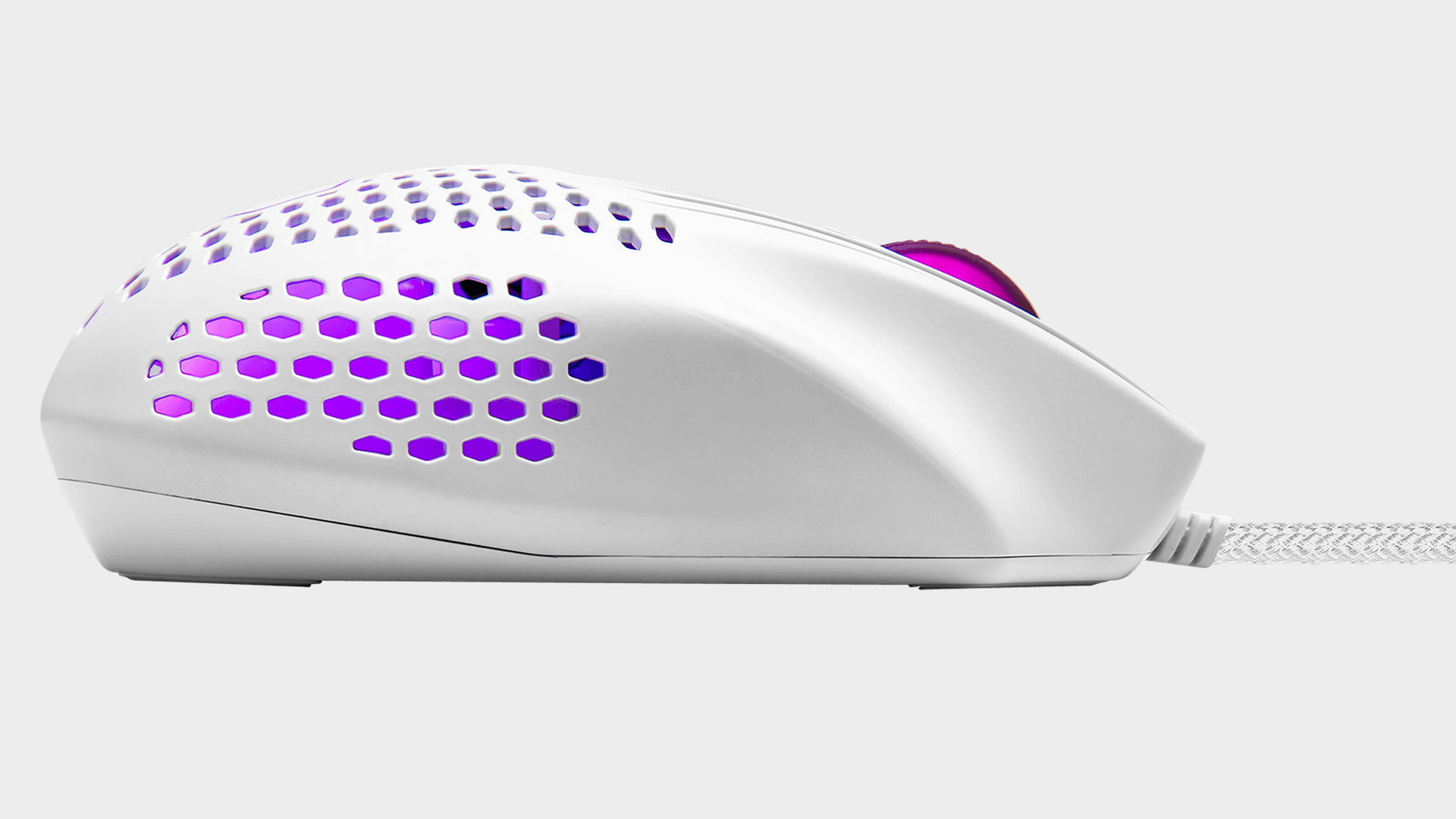
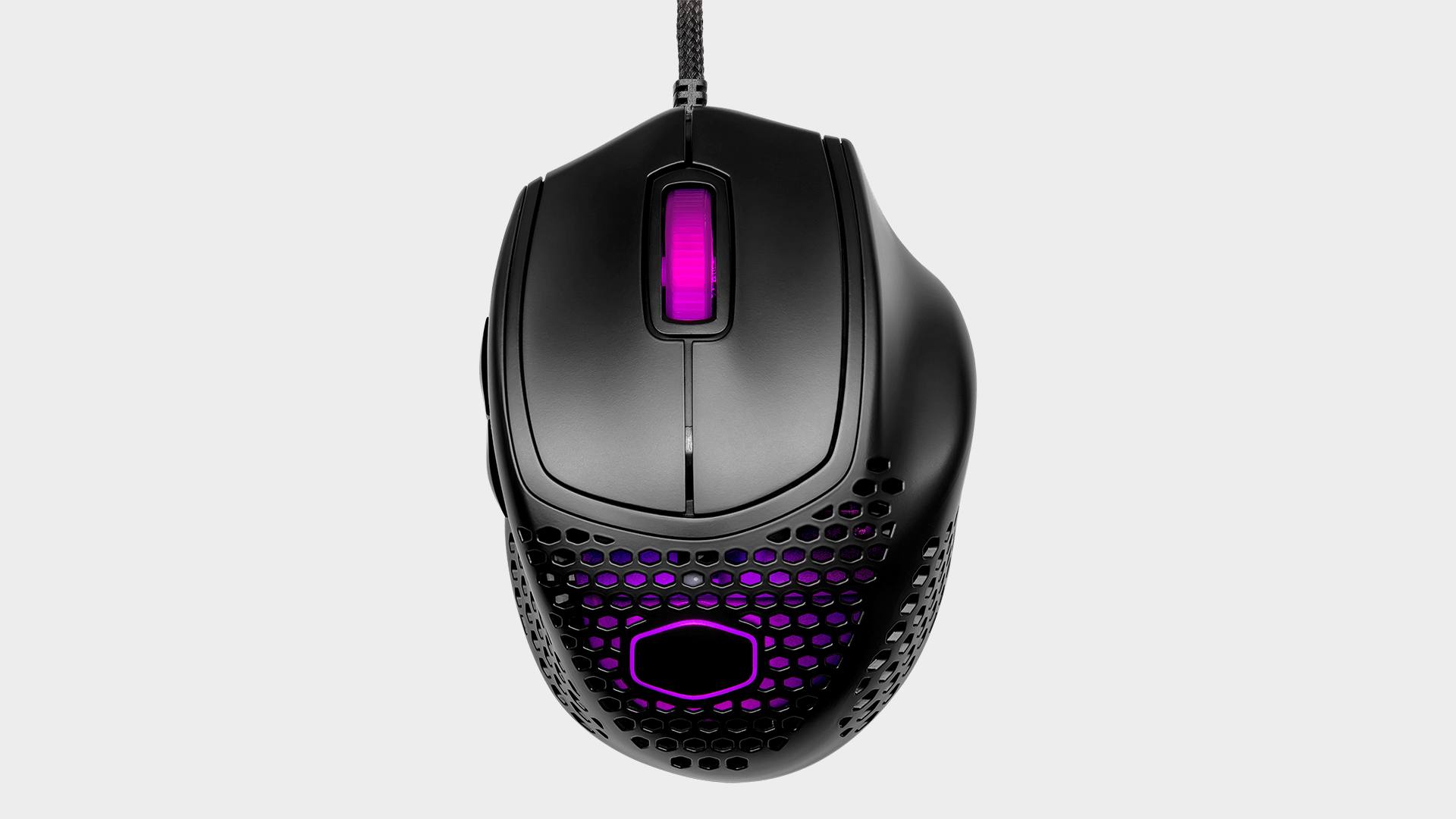
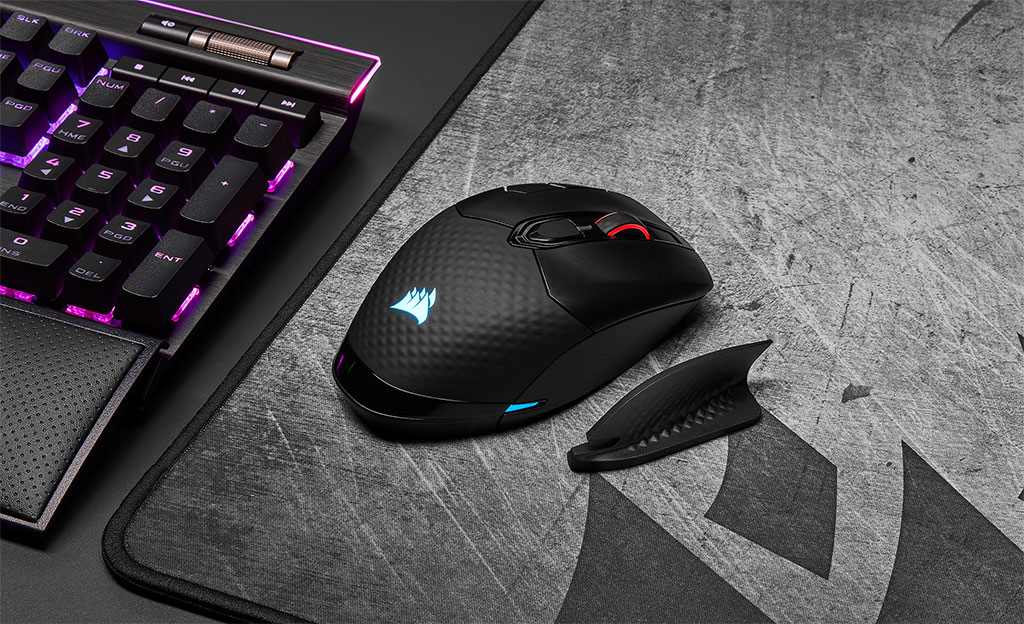
Best gaming mouse: the top rodents for gaming
Best wireless gaming mouse: cable-free control
Best light gaming mouse: the lighter the better?
The Cooler Master MM720 is by far the smallest of the light gaming mouse bunch here, meaning it’s also the lightest at a mere 49 grams. It features the trendy honeycomb design but swaps a long body for a stubby design you could mistake for a cheap travel mouse you’d find grossly overpriced at an airport tech store.
Its smooth, plastic finish isn’t the most premium around, but even with the creaks, there’s no way a tense grip will crush it like a can. And despite the perforations, it’s IP58 water-resistant, so dropping a gamer beverage over this thing won’t destine it for the trash heap.
Its comparatively tiny footprint isn’t just a byproduct of Cooler Master aiming for that ultra-lightweight buzzword. There’s a method in the miniature form-factor in that it’s primarily designed for a claw grip. There’s no reason a palm or hybrid grip won’t work but prepare for your digits to curl over the clickers if that’s the case. Either way, the rare (and much appreciated) finger rest on the right-hand side should help keep things comfortable.
Why should I use a lightweight mouse?
A lightweight mouse is great for competitive gaming. The lighter weight makes it easier to stop, allows for quicker flings and swipes across your mousepad, which is ideal for first-person shooters. Some players like to lift the mouse as they play, and a lighter mouse is easier for those sorts of actions.
What counts as a lightweight mouse?
The general consensus is that, to count as a lightweight gaming mouse, you have to be looking at one that’s less than 80g. Most standard gaming mice are over the 100g mark as a rule.
How do we test gaming mice?
We’ve used enough gaming mice to have a good feel for build quality, button placement, and shape. Our opinions on those aspects of mouse design are naturally subjective, but they’re also well-informed. The tricky part of testing gaming mice is analyzing the other part of the equation: tracking performance, jitter, angle snapping, acceleration, and perfect control speed, and determining how each of those issues affects the experience of using a mouse.
For that, applications such as Mouse Tester come in handy. We used this software to see if we could spot any glaring issues with the mice we used. In every gaming mouse we tested, though, angle snapping and acceleration were disabled in the mouse drivers by default (though a mouse can still exhibit acceleration from issues with the sensor itself) and never encountered any glaring performance issues.
Gaming mouse jargon buster
Grip refers to how you hold the mouse. The most common grips are palm, claw, and fingertip. Here's a good example of how each grip works.
CPI stands for counts per inch, or how many times the mouse sensor will read its tracking surface, aka your mousepad, for every inch it’s moved. This is commonly referred to as DPI, but CPI is a more accurate term. The lower the CPI, the further you have to move the mouse to move the cursor on the screen.
Jitter refers to an inaccuracy in a mouse sensor reading the surface it’s tracking. Jitter often occurs at higher mouse movement speeds or higher CPIs. Jitter can make your cursor jump erratically, and even slight jitter could wreck a shot in an FPS or make you misclick on a unit in an RTS.
Angle snapping, also called prediction, takes data from a mouse sensor and modifies the output to create smoother movements. For example, if you try to draw a horizontal line with your mouse, it won’t be perfect—you’ll make some subtle curves in the line, especially at higher sensitivities. Angle snapping smooths out those curves and gives you a straight line instead. This is generally bad because it means your cursor movements won’t match your hand’s movements 1:1, and angle snapping will not be useful in most games. Thankfully, almost all gaming mice have angle snapping disabled by default.
Acceleration is probably the most reviled, most scrutinized issue with gaming mouse sensors. When a mouse sensor exhibits acceleration, your cursor will move faster the faster you move the mouse; this is often considered bad because moving the mouse slowly six inches across a mousepad will move the cursor differently than moving the mouse rapidly same distance. This introduces variability that can be hard to predict.
Perfect control speed, or malfunction rate, refers to the speed at which the mouse can be moved while still tracking accurately. Most gaming mice will track extremely accurately when moved at slow speeds, but low CPI players will often move their mice large distances across the mousepads at very high speeds. At high speeds, especially at high CPIs, not all mouse sensors can retain their tracking accuracy. The point at which the sensors stop tracking accurately will differ between CPI levels.
IPS measures inches per second and the effective maximum tracking speed of any given sensor is rated too. Not to be confused with the gaming monitor panel type by the same name, the higher the IPS of any given mouse, the better it can keep up with high-speed movement and maintain accuracy.
Lift-off distance is still a popular metric in mouse enthusiast circles, though it does not affect most gamers. LOD refers to the height a mouse has to be raised before the sensor stops tracking its surface. Some gamers prefer a mouse with a very low lift-off distance because they play at very low sensitivity and often have to lift their mouse off the pad to “reset” it in a position where they can continue swiping. With a low LOD, the cursor will not be moved erratically when the mouse is lifted.
- "
- 000
- 100
- 2020
- 2022
- 67
- 84
- 8k
- About
- accurate
- across
- Aiming
- airport
- All
- applications
- around
- auto
- battery
- beautiful
- before
- BEST
- beverage
- Bit
- bluetooth
- body
- Box
- build
- Bunch
- case
- Cash
- charge
- charging
- chassis
- Common
- Competitive
- computer
- Connectivity
- Consensus
- continue
- could
- create
- credit
- data
- Design
- despite
- developing
- Devices
- digits
- distance
- down
- ecosystem
- Edge
- Effective
- experience
- fair
- Fashion
- FAST
- fatigue
- Features
- Feet
- fit
- Flexibility
- footprint
- FPS
- full
- G
- game
- Gamers
- Games
- Gaming
- General
- Giving
- good
- Gram
- Grams
- great
- Handy
- here
- High
- Highlight
- history
- hold
- How
- HTTPS
- Hybrid
- i
- ICON
- image
- inches
- Included
- Increase
- issues
- IT
- Jedi
- jump
- kit
- large
- latest
- lead
- levels
- light
- Line
- List
- Long
- machine
- major
- Making
- mark
- Market
- Match
- maximum
- May
- measures
- medical
- mice
- Monitor
- more
- Most Popular
- move
- movement
- open
- Opinions
- Option
- Options
- Other
- PC
- performance
- physical
- plastic
- play
- player
- players
- Plenty
- Popular
- potential
- powerful
- precision
- prediction
- Premium
- price
- Pro
- Profile
- Profiles
- Pros
- quality
- Rates
- Razer
- RE
- reactions
- Reading
- reduce
- Reports
- Resources
- REST
- Risk
- rivals
- room
- rubber
- Run
- s
- Screen
- sell
- sensors
- set
- Shell
- SIX
- small
- smaller
- So
- Software
- Space
- speed
- Spot
- spread
- Status
- Stem
- store
- support
- Surface
- surprise
- sweet
- SWIFT
- Switch
- tech
- test
- Testing
- The
- theoretically
- time
- top
- touch
- track
- Tracking
- travel
- unique
- usb
- version
- war
- weigh
- What
- Wheel
- WHO
- wireless
- wireless charging
- Work
- X
- year

